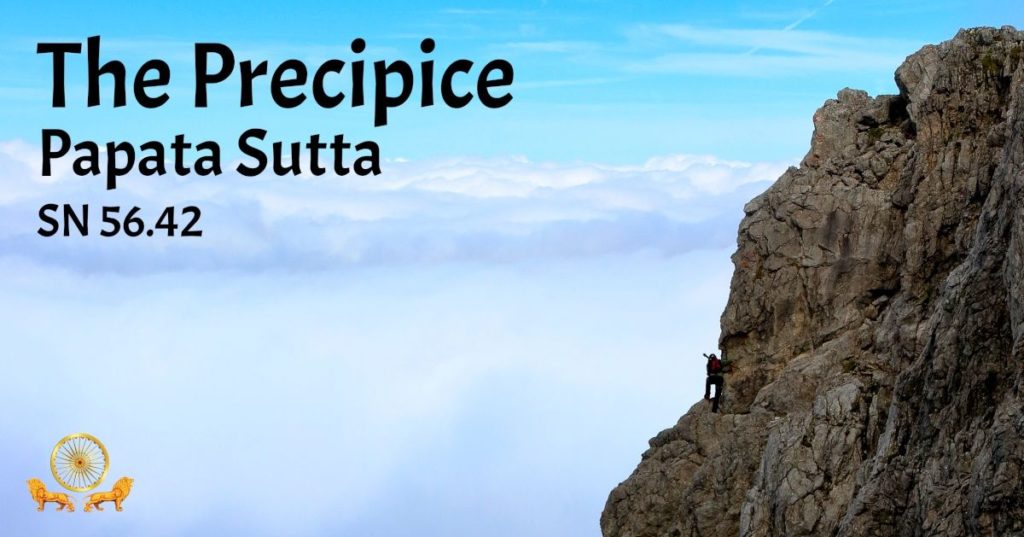
What is the most dangerous thing in the world?
On one occasion the Blessed One was dwelling at Rajagaha on Mount Vulture Peak. Then the Blessed One addressed the bhikkhus thus: “Come, bhikkhus, let us go to Paṭibhana Peak for the day’s abiding.”
“Yes, venerable sir,” those bhikkhus replied. Then the Blessed One, together with a number of bhikkhus, went to Paṭibhana Peak. A certain bhikkhu saw the steep precipice off Paṭibhana Peak and said to the Blessed One: “That precipice is indeed steep, venerable sir; that precipice is extremely frightful. But is there, venerable sir, any other precipice steeper and more frightful than that one?”
“There is, bhikkhu.”
“But what, venerable sir, is that precipice steeper and more frightful than that one?”
“Those ascetics and brahmins, bhikkhu, who do not understand as it really is: ‘This is suffering’; who do not understand as it really is: ‘This is the origin of suffering’; who do not understand as it really is: ‘This is the cessation of suffering’; who do not understand as it really is: ‘This is the way leading to the cessation of suffering’—they delight in volitional formations that lead to birth, in volitional formations that lead to aging, in volitional formations that lead to death, in volitional formations that lead to sorrow, lamentation, pain, displeasure, and despair. Delighting in such volitional formations, they generate volitional formations that lead to birth, generate volitional formations that lead to aging, generate volitional formations that lead to death, generate volitional formations that lead to sorrow, lamentation, pain, displeasure, and despair. Having generated such volitional formations, they tumble down the precipice of birth, tumble down the precipice of aging, tumble down the precipice of death, tumble down the precipice of sorrow, lamentation, pain, displeasure, and despair. They are not freed from birth, aging, and death; not freed from sorrow, lamentation, pain, displeasure, and despair; not freed from suffering, I say.
“But, bhikkhu, those ascetics and brahmins who understand as it really is: ‘This is suffering’ … ‘This is the way leading to the cessation of suffering’—they do not delight in volitional formations that lead to birth, nor in volitional formations that lead to aging, nor in volitional formations that lead to death, nor in volitional formations that lead to sorrow, lamentation, pain, displeasure, and despair. Not delighting in such volitional formations, they do not generate volitional formations that lead to birth, nor generate volitional formations that lead to aging, nor generate volitional formations that lead to death, nor generate volitional formations that lead to sorrow, lamentation, pain, displeasure, and despair. Not having generated such volitional formations, they do not tumble down the precipice of birth, nor tumble down the precipice of aging, nor tumble down the precipice of death, nor tumble down the precipice of sorrow, lamentation, pain, displeasure, and despair. They are freed from birth, aging, and death; freed from sorrow, lamentation, pain, displeasure, and despair; freed from suffering, I say.
“Therefore, bhikkhus, an exertion should be made to understand: ‘This is suffering.’… An exertion should be made to understand: ‘This is the way leading to the cessation of suffering.’”
© Bhikkhu Bodhi, The Connected Discourses of the Buddha (Wisdom Publications, 2000)
This excerpt from The Connected Discourses of the Buddha by Bhikkhu Bodhi is licensed under a Creative Commons Attribution-NonCommercial-NoDerivs 3.0 Unported License.
Based on the work Connected Discourses of the Buddha at Wisdom Publications.